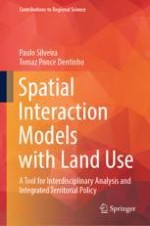2024 | OriginalPaper | Buchkapitel
2. Land Use Simulation Models
verfasst von : Paulo Silveira, Tomaz Ponce Dentinho
Erschienen in: Spatial Interaction Models with Land Use
Verlag: Springer Nature Switzerland
Aktivieren Sie unsere intelligente Suche, um passende Fachinhalte oder Patente zu finden.
Wählen Sie Textabschnitte aus um mit Künstlicher Intelligenz passenden Patente zu finden. powered by
Markieren Sie Textabschnitte, um KI-gestützt weitere passende Inhalte zu finden. powered by
